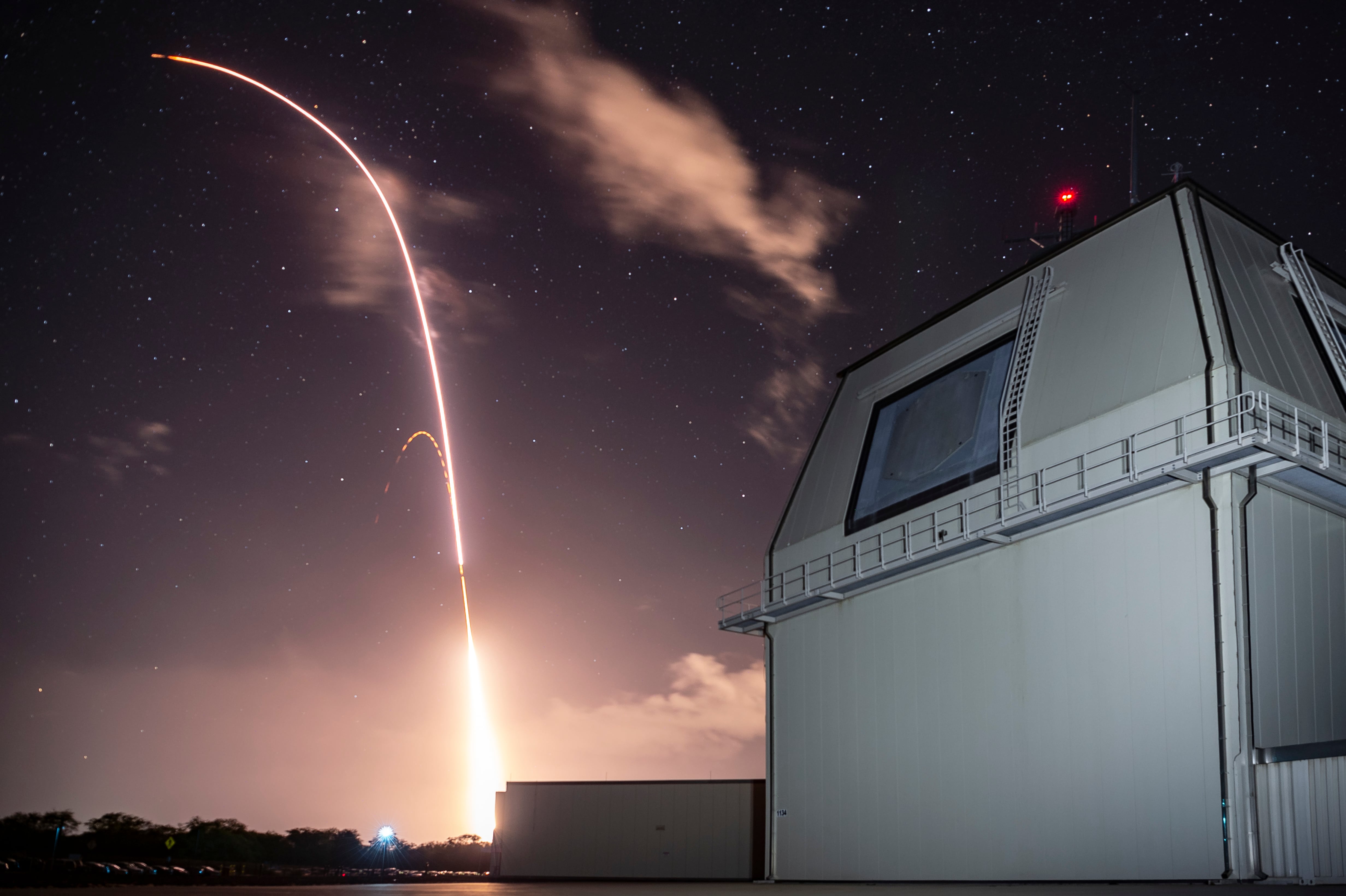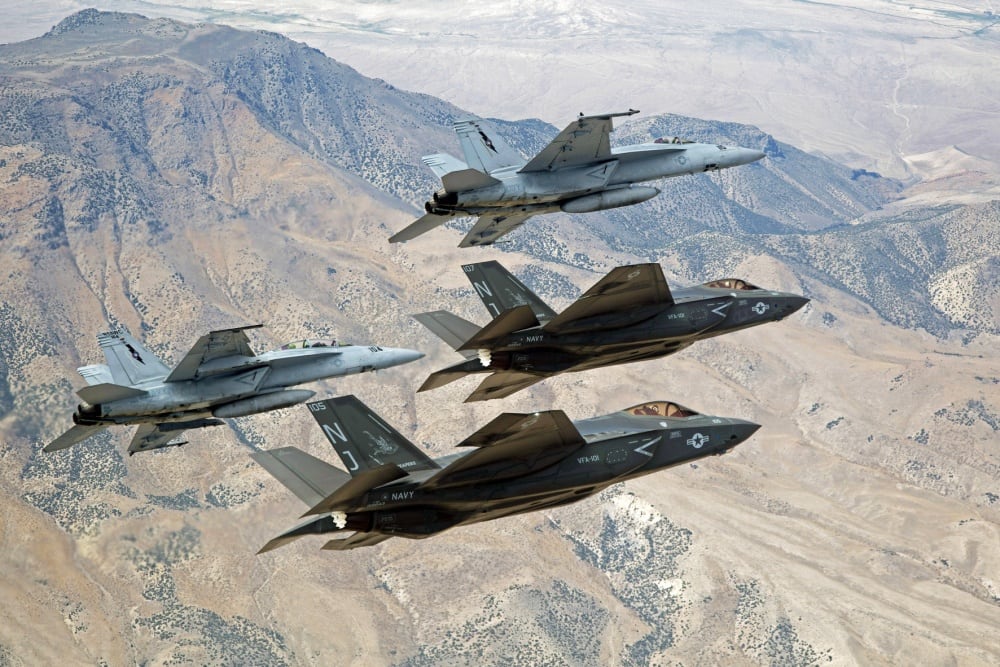Some of the military’s premier ranges for training jet and helicopter pilots are antiquated and unable to prep units for conventional war, according to a Defense Department Inspector General report released this week.
The IG looked at ranges used by aviation units assigned to U.S. Indo-Pacific Command.
It found a Navy range in Nevada hampered by 50-year-old ground surface-to-air simulators, next-generation Air Force jets that can’t recognize antiquated Soviet missile systems as a threat on an Alaskan range and F-35B joint strike fighter pilots who don’t have enough range space to train adequately at Marine Corps Air Station Yuma in Arizona.
And while the Pentagon has developed aircraft with the technology to defeat adversary nations, the services haven’t modernized their ranges to train pilots on the full capabilities of those aircraft, the IG found.
“As a result, the aviation units in the USINDOPACOM area of responsibility could not train as they would fight,” which is a key tenet of the Pentagon’s 2018 National Defense Strategy, according to the report.
“Training ranges and airspace did not have the capability or capacity to support aviation readiness for units assigned to USINDOPACOM,” the report states. “The training land, airspace, impact areas and electronic warfare systems were more limited than what was required for training with ordnance and the aircrafts’ capabilities.”
Headquartered in Hawaii, INDO-PACOM would lead any U.S. war against China or North Korea. It continues to monitor key flash points across the a vast region stretching from the Indian Ocean to America’s western states.
Investigators visited ranges in Hawaii, Alaska, Nevada and Arizona and reviewed how other ranges are used in Japan and South Korea.
At the Navy’s premier air-to-air and air-to-ground training facility, Nevada’s Fallon Range Training Complex, aviators and their instructors from nearby Naval Air Station Fallon reported that the electronic warfare systems “did not replicate the threats pilots would face in combat and were outdated,” the report states.
“The range had electronic warfare systems ranging from a 1970 surface-to-air simulator to a 2006 mobile threat emitter simulator,” the report states. “These electronic warfare systems did not represent current threats.”
IG investigators determined that the Joint Pacific Alaska Range Complex’s electronic warfare systems are so past their prime that the Air Force’s F-22 Raptor and F-35 Lightning II jets don’t even see them as a threat.
That’s “because the aircraft technology is more advanced than the range electronic warfare systems,” according to the report.
The complex replicates Soviet missile systems from the 1980s and Air Force officials told investigators that the current systems “do not replicate near-peer threats.”
Army AH-64 Apache pilots also voiced concerns about the Alaskan range, saying that the dumpsters used as targets there “were of poor quality.”
“The pilots were often unable to locate their targets because the targets — dumpsters — do not facilitate accurate recognition of combat vehicles,” the report states.
At Marine Corps Air Station Yuma, Arizona, officials complained that the range wasn’t large enough for F-35B training.
One pilot reported he couldn’t shoot standoff weapons during routine exercises, fly in a fighting formation or train widely with live ordnance, according to IG.
“As a result of the lack of airspace, the pilot stated that F-35 pilots trained in simulators, which could be linked so that the pilots could fly in their four aircraft fighting formation,” IG reported.
Pilots there also complained of electronic warfare systems that did not resemble those of an advanced adversary.
An AV-8 Harrier pilot added that laser-guided rocket training was hampered “because of a lack of moving targets” at the Yuma range.
Other aviators complained that the target approaches and training became “repetitive and predictable” after just a few runs, according to the IG.
RELATED

On the other side of the Pacific, troops reported similar problems with the size of Japanese ranges and the electronic warfare training measures they employ.
The Draughon Range featured simulated surface-to-air threats “from the 1960s and 1970s,” according to the report.
Air Force pilots complained that they can’t fire Hellfire missiles or precision-guided weapons at most South Korean ranges.
And although they can expend all their ordnance at the Tori Shima range, a pilot told investigators that it "was a piece of land that was exposed only during low tide, creating difficulties in completing training,” the report states.
Like other readiness woes dogging the American armed forces today, the IG blames these range problems on financial crunches caused by the Iraq and Afghanistan wars, ongoing counter-terrorism operations across the globe and the fluctuating budgets Congress imposed on the services during the past decade.
All those factors “negatively impacted the DoD’s ability to adequately fund range modernization" and the Pentagon "has not developed a comprehensive plan to address the range capability and capacity gaps across he DoD,” the report states.
Military officials concede that many of the ranges in the Indo-Pacific region were designed for training during World War II and the Cold War.
American units often share space with local Japanese and South Korean forces and they confront restrictions created by inclement weather, safety concerns and rules designed to protect endangered species.
Pentagon officials concurred with the recommendations in the IG report and said a strategic plan to identify and fix training range problems is underway.
Geoff is the managing editor of Military Times, but he still loves writing stories. He covered Iraq and Afghanistan extensively and was a reporter at the Chicago Tribune. He welcomes any and all kinds of tips at geoffz@militarytimes.com.





